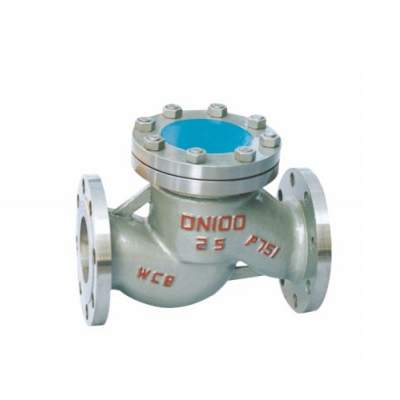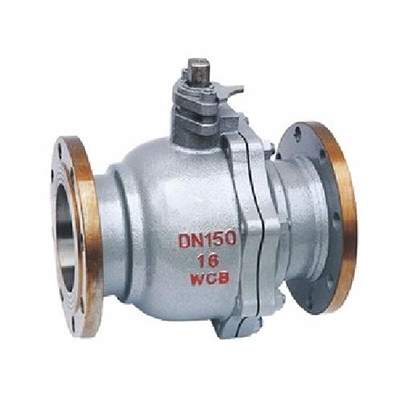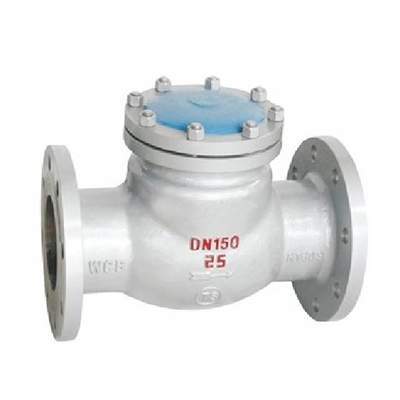Welcome to My Blog!
Before we dive into the content, if you’re interested in our products or have any questions, please feel free to visit our Contact Us page on the website. Our team is ready to assist you with inquiries, orders, or any support you may need.
Now, let’s get started on our journey together. I hope you find the content here insightful, engaging, and valuable.
Plumbing check valves are essential components in ensuring the efficient operation of water systems, preventing backflow, and maintaining safe water flow in both residential and commercial buildings. Whether you’re a DIY enthusiast looking to install one yourself or a homeowner seeking to understand their importance, this guide will cover everything you need to know about plumbing check valves, including their types, installation, maintenance, and troubleshooting.
What is a Plumbing Check Valve?

Definition and Purpose of Plumbing Check Valves
A plumbing check valve is a device installed in a plumbing system to ensure that water flows in only one direction. These valves are designed to prevent backflow, a situation where water reverses its flow and potentially contaminates the clean water supply. Check valves are used in a variety of systems, from residential plumbing to industrial applications.
How Plumbing Check Valves Function in a System
Check valves use a spring mechanism or a flapper to block reverse flow. When water is flowing in the correct direction, the valve stays open, allowing water to pass through. However, when the flow reverses, the valve closes to prevent backflow. This simple yet effective mechanism helps to keep the water system clean and safe.
Common Applications of Plumbing Check Valves
Plumbing check valves are commonly used in residential water systems, backflow prevention, sump pumps, irrigation systems, and wastewater treatment systems. They are crucial in industries where the integrity of water flow must be maintained to avoid contamination.
Why Are Plumbing Check Valves Essential for Your Plumbing System?
Backflow Prevention and Its Importance
Backflow is a significant concern in any water system, as it can lead to contamination. A plumbing check valve prevents backflow by automatically closing when the water flow reverses. This is especially important in areas where clean water could be exposed to hazardous materials, such as near sewage systems or industrial equipment.
Ensuring Safe Water Flow with Plumbing Check Valves
By maintaining the proper direction of water flow, check valves not only protect the water supply but also improve the overall efficiency of the system. They are crucial for keeping systems pressure-balanced and preventing costly repairs due to water damage or contamination.
Common Plumbing Issues Solved by Check Valves
Check valves are essential for solving problems such as:
- Backflow contamination: Ensuring clean water stays clean.
- Water hammer: Preventing surges in the pipes that can damage systems.
- Sump pump failure: Ensuring the system doesn’t lose its effectiveness.
Different Types of Plumbing Check Valves

Swing Check Valve: When to Use It?
Swing check valves have a hinged disc that swings open when water flows in the correct direction. They are ideal for low-pressure systems and are typically used in larger pipelines where there’s more space for the valve to operate.
Spring Check Valve: Pros and Cons
Spring check valves use a spring-loaded mechanism to close the valve when water flow stops or reverses. These valves are more compact and ideal for high-pressure systems and smaller pipelines. They offer faster closure and better protection against backflow.
Ball Check Valve: Best Use Cases
Ball check valves use a ball to block reverse flow. They are often used in applications where a high level of reliability is needed, such as in sump pumps or irrigation systems, due to their robust design and easy maintenance.
Other Check Valve Variants and Their Applications
Other variants include duckbill check valves, tilting disc valves, and y-pattern check valves, each suitable for specific applications, depending on factors like water pressure, flow rate, and space constraints.
How to Install a Plumbing Check Valve
Step-by-Step Guide to Installing a Plumbing Check Valve
Installing a plumbing check valve requires careful attention to detail. Here’s a simple step-by-step guide:
- Choose the right valve based on the type of system you’re working with.
- Shut off the water supply to avoid any leaks or accidents.
- Prepare the pipe by cleaning and ensuring the right size for the valve.
- Install the valve with the arrow indicating the correct flow direction.
- Tighten connections securely, ensuring no leaks.
- Test the valve by running water through the system and checking for proper functionality.
Correct Positioning and Orientation for Optimal Function
Ensure the valve is installed in the correct direction, with the flow arrow pointing in the same direction as the water flow. Improper installation could lead to malfunction, causing potential backflow issues.
Common Mistakes to Avoid During Installation
- Incorrect valve orientation: This is one of the most common installation errors.
- Not ensuring the right pipe size: An incorrect size can lead to leaks or insufficient flow.
- Using the wrong type of valve: Each check valve type is designed for specific applications.
Maintaining Your Plumbing Check Valve
How to Keep Your Check Valve in Top Condition
Regular maintenance is key to extending the life of your plumbing check valve. Here’s how to maintain it:
- Inspect the valve periodically for blockages or damage.
- Clean the valve to remove any dirt or debris that might interfere with its operation.
- Lubricate the moving parts, such as the spring or disc, to ensure smooth operation.
Regular Inspection and Cleaning Tips
- Visual inspection: Check for cracks, leaks, or signs of corrosion.
- Cleaning: Disassemble the valve (if possible) and clean the internal components.
- Test the valve: Ensure that the valve closes properly when the water flow stops or reverses.
Signs of Wear and When to Replace Your Check Valve
- Frequent backflow: If backflow is occurring, the valve may not be closing properly.
- Water leaks: Leaking around the valve could indicate wear or failure.
- Corrosion: Visible corrosion may signal the valve needs replacing.
Troubleshooting Common Plumbing Check Valve Issues
Leaking Check Valves: Causes and Solutions
Leaking is often caused by improper installation, wear, or damage to the valve’s components. Tightening connections, cleaning the valve, or replacing worn seals may solve the issue.
Why Is Your Plumbing Check Valve Sticking?
If the valve is sticking, it could be due to debris, corrosion, or improper lubrication. Cleaning the valve and applying appropriate lubricants can often resolve this issue.
How to Fix a Malfunctioning Check Valve
If your valve is malfunctioning, it may need to be disassembled for inspection. Look for damaged seals, spring malfunctions, or debris, and replace any faulty components.
How to Tell When a Check Valve Needs Replacing
If the valve cannot be repaired or continues malfunctioning after maintenance, it is time to replace it. Always choose a replacement valve that matches the specifications of the old one.
Choosing the Right Plumbing Check Valve
How to Select the Right Size for Your System
To choose the right check valve, consider the pipe diameter, water flow rate, and pressure rating. Sizing ensures the valve operates efficiently and prevents backflow.
Material Options: Brass, Stainless Steel, PVC
- Brass: Durable and resistant to corrosion, suitable for high-pressure systems.
- Stainless Steel: Best for industrial applications, offering excellent durability and resistance to harsh chemicals.
- PVC: Lightweight, cost-effective, and ideal for low-pressure systems.
Factors to Consider When Choosing Between Spring and Swing Check Valves
- Spring check valves are compact and better for small spaces and high-pressure systems.
- Swing check valves are ideal for larger pipelines and low-pressure applications, offering less resistance to flow.
Comparing Prices and Quality for Best Value
When selecting a check valve, balance price, material quality, and reliability. While cheaper valves might seem cost-effective, investing in a high-quality valve can prevent expensive repairs down the road.
Plumbing Check Valve for Specific Applications
Residential Plumbing Systems
In residential systems, plumbing check valves are used to prevent backflow and ensure the water supply remains clean and safe for household use. They are typically installed in sump pumps, irrigation systems, and water heaters.
Industrial Plumbing and Wastewater Systems
In industrial settings, check valves prevent contamination and maintain the flow of water in large-scale wastewater treatment systems and industrial pipelines.
Check Valves for Irrigation Systems
Check valves in irrigation systems prevent water from flowing back into the main supply, protecting water sources from potential contamination.
Using Check Valves in Sump Pumps and Backflow Prevention
In sump pumps, check valves prevent water from flowing back into the pump and help maintain consistent drainage, while backflow preventers ensure wastewater doesn’t enter potable water systems.
Plumbing Check Valves and Regulatory Compliance

Lead-Free Plumbing Check Valves
In many countries, there are stringent regulations requiring plumbing components, including check valves, to be lead-free. This ensures the safety and health of consumers.
Ensuring Compliance with Plumbing Codes
Always check local plumbing codes for specific requirements related to check valves, especially when installing them in new buildings or for commercial applications.
Why Lead-Free Valves Matter for Your Health and Safety
Lead-free plumbing check valves ensure that drinking water remains safe from harmful contaminants, meeting both health standards and regulatory compliance.
Conclusion
Plumbing check valves play a crucial role in maintaining the integrity of water systems by preventing backflow, ensuring proper water flow, and safeguarding against contamination. By choosing the right type of check valve, installing it correctly, and performing regular maintenance, you can ensure your plumbing system remains safe and efficient. Whether you’re dealing with residential or industrial applications, the right check valve will help protect your water supply for years to come.
FAQ
What is a plumbing check valve?
A plumbing check valve is a device that allows water to flow in only one direction, preventing backflow and ensuring the safety and cleanliness of your water supply.
Why do I need a plumbing check valve?
You need a plumbing check valve to prevent water from flowing backward into the system, which could contaminate the water supply and cause other plumbing issues.
How does a plumbing check valve work?
A plumbing check valve works by using a spring or disc mechanism that closes when the water flow reverses, blocking the flow and stopping backflow from occurring.
Can a plumbing check valve be installed in any direction?
No, plumbing check valves must be installed with the flow direction marked on the valve body, ensuring it works properly to prevent backflow.
How often should I maintain or replace my plumbing check valve?
You should inspect and clean your plumbing check valve regularly, ideally once a year, and replace it if you notice leaks, corrosion, or if it no longer closes properly.
Ready to Protect Your Water System?
Ensure your plumbing system stays efficient and safe with a reliable plumbing check valve. If you need expert advice or help with installation, don’t hesitate to contact us today. Our team is here to guide you every step of the way!
Get in touch now to find the perfect plumbing check valve for your needs!
